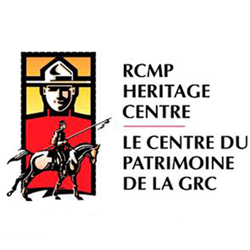John Stolarski’s Old Newspaper Clippings
With the exception of his first two years in the Force, John Stolarski spent his entire career as a Police Dog Services handler (1961 – 1988).
Throughout this career, John clipped newspaper articles about members who he had worked with.
Despite the fact that John has passed away, his family has agreed for us to re-post these articles for the interest of RCMP Veterans and current members of the Force.
NEW SLED DOG IN NORTH
1962 – Siberian Huskies replace Canadian dogs for northern transportation and patrol duties.
RCMP officers in the north are receiving new sled dogs courtesy of Walt Disney. The Siberian husky will replace the Canadian husky in a land where dogs still play a major role in transportation.
Superintendent W.G. Fraser, heard of the RCMP’s Arctic division says of the new husky: “.. a good worker, easily trained, less vicious and more disease resistant than the present Arctic sled dog.”
Superintendent Fraser received 34 of the Siberian freed last year after Walt Disney Production had finished filming Nikki, Wild Dog of the North, in the Canadian Rockies. Disney had scoured the world markets for the Siberians and was looking for a good home for them after the filming.
Supt. Fraser bought six other – for a total of 40 – and set afoot a breeding program at the Fort Norman detachment half way down the Mackenzie River in the Northwest Territories.
The immediate aim is to replace all RCMP dogs. There now are 232 but should be about 250, says Supt. Fraser.
Then, on a selective basis, a start may be made on replacing the privately-owned teams among Eskimos and Indians – for safety as much as anything.
Every year dogs have taken a toll of human life and have seriously injured and maimed others.
The Canadian sled dog, an in-bred haphazard product that still owes a great deal to its wolf ancestry, is a menace by instinct, Supt. Fraser says.
“If you happen to flop, he’ll be on you – just for something to eat. Children are particularly vulnerable in the settlements.”
“Besides, the Canadian dogs are so inbred that they fall prey to disease like flies. The Siberian is much healthier.”
The Mountie suggests that responsible Indian and Eskimo dotted operators will be allowed eventually to buy the Siberians if they can be counted on to care for them properly, keep them separated from the Canadian mongrel and generally protect the new dogs from abuse, malnutrition and disease.
This is a large order in a country where dogs in the summer are often left to fend for themselves and usually are weakened by constant lack of food.
The Siberian is roughly about the same size as the Canadian sled dog, which in turn is a little bulkier and shorter-legged than the Greenland type.
Supt. Fraser says he feels the dog is going to be needed for a long time in the north – both for routine patrol out of RCMP outposts in isolated sectors and for Eskimo and Indian hunters and trappers.
An aircraft is fine for longer distances, he says, but it doesn’t give the patrol coverage that a dogma provides for the area between two given points.
AXE KILLS BOY, 13, IN McCREARY
Police search is on for brother, 16.
July 11, 1963 – McCreary Manitoba – A frightened telephone voice which Tuesday pleaded with a doctor to “please help me, I’ve just hit my brother with an axe,” let to the discovery of a dying 13-year-old by, and sparked a manhunt for his 16-year-old brother which now involves 16 policemen, 12 special rangers, six cars, a tracking dog and an aircraft.
Thirteen-year-old John Noel Plessis died Tuesday afternoon after he was found in a field half a mile from his parents’ farm in the McCreary district. The boy had been hit on the head with an axe, causing heavy loss of blood and brain damage.
The search is still on for his 16-year-old brother Gilbert, who police say is wanted for “guestioning.” After telephoning the doctor and police, Gilbert disappeared in the 70,000-acre community pasture which butts up agains the Plessis farm.
Dr. Ernest Penner was in his Main Street office at 4:05 p.m. Tuesday when he answered what he thought was a routine telephone call. After receiving the initial plea of help, Dr. Penner identified the caller as Gilbert Plessis, and was told where Noel would be found.
The McCreary RCMP detachment was also phoned, and members of the detachment began their search for the missing 16-year-old boy.
Dr. Penner’s first reaction was to take Peter Code – a patient in his office at the time – with him to the Plessis farm. Following the instructions, he drove along a fence, then notice a tractor and wagon where some root picking had been taking place.
Lying On Side
“We drove along the fence,” he said, “Then we noticed tractor in the field. We went over there, and found Noel, dressed in shirt and jeans, lying on his side, The boy was about 30 feet from the fence, in the field a full half mile from his father’s farm-house.”
Dr. Penner said the boy had a deep cut along the back, right hand side of his head, and had lost a lot of blood.'”We tried to take him to hospital,” the doctor said. “He was breathing when we found him, but died before we could get to McCreary.”
Police Wednesday refused to comment on the incident, but members of Noel’s family were convinced it was an accident. Both Mr. and Mrs. Plessis went to bed Wednesday afternoon – for the first time since the incident – but Francis, their oldest son, said he thought Gilbert had experienced panic after a root-picking accident.
The boys were both in good spirits when they went back to the field after lunch, Francis Plessis said. “They were picking roots, and some of the roots would require one boy to hold them while the other cut with an axe.”
“It would be easy for the axe to glance and hit Noel in the back of the head if he had his face turned away,” Francis said. “Gilbert must have been terrified, because he ran past three or four neighbours’ farms before stopping to telephone.”
No Phone
The calls were made from the farm of Cliff George, since the Pleases farm has no telephone.
Francis Plessis recalled that his uncle – who identified Noe’s body – said there was only one wound in the head. Police later said there were two separate cuts, both inflicted with some blunt instrument which caused heavy bleeding and brain damage.
“I can’t image Gilbert doing anything deliberate,” Francis said, “because he was the easy-natured one of the two. Sure – they used to wrestle a lot, but they came up smiling.”
Tracks Washed Away

RCMP Constable Barry Rawlins, of the Dauphin detachment, uses his tracking dog Willie in the search for 16-year-old Gilbert Pleases, wanted for questioning in connection with the death of his brother Noel at McCreary Tuesday. The tracking dog found the search more difficult after rains Wednesday washed away many leads.
The police search began to bog down 12 hours later, when the first rain in the district washed away tracks and scents. A police aircraft covered 200 square miles of the district, without success.
One of the biggest problems in the search in the close proximity of the McCreary Community pasture, some 70,000 acres of undeveloped bush, swamp and hills which is most difficult to search.
“We have to remember we are looking for someone who doesn’t want to be found,” one RCMP officer said. “We could pass within three feet of him and miss him in that country.”
The police are counting heavily on the 12 mounted rangers from the local PFRA group, who have volunteered to help search. At the same time police are carefully screening the dozens of other volunteers who have turned up and offered to help.
“Our best allies are the lack of food and the heavy infestation of mosquitos and ticks,” said one policeman.
There are six other children in the Pleases family. They are Francis 21; Yvette, 19; Diana, 15; Bernard, 10; Peter, 8 and Rose 6.
RCMP TO TRANSFER OTTAWA DOG SCHOOL TO INNISFAIL

Photograph of RCMP and Municipal Police dog handlers at the RCMP Police Service Dog Section training centre (Source of photo – John Stolarski’s Photo Collection).
May 1, 1964 – The entire police service dog training section of the RCMP, now based in Ottawa, will be transferred to Innisfail, Assistant Commissioner L. Bingham, commanding K Division in Edmonton, announced today.
Negotiations to establish the centre on a 17-acre parcel of land near the Bowden Correctional Institute are now complete and the operations are hoped to begin during the 1964-65 fiscal year. No exact date has been set.
A/Comm. Bingham said in his statement that the main reason for the move is the lack of suitable accommodation in Ottawa area coupled with the fact that the Innisfail district “offers ideal terrain and climate.”
Another factor that affected the decision is the fact that 15 of the 20 police service dog sections are in Western Canada, he said.
The training staff at the centre will number four. The actual number dogs to be kept at the centre will fluctuate with the replacement requirements and varies from year to year.
The capital expenditures for this project have not been defined but the pay and allowances of personnel connected with the operation are expected to total $25,145 annually, plus an estimated $4,000 for operating expenses.
A/Comm. Bingham made it clear that the move is not planned to coincide with the expansion program to take on the training of dogs for other police forces. He said the additional training plan is subject to periodical review and depends on the interest expressed by other police forces.


 July 15, 2015
July 15, 2015 












